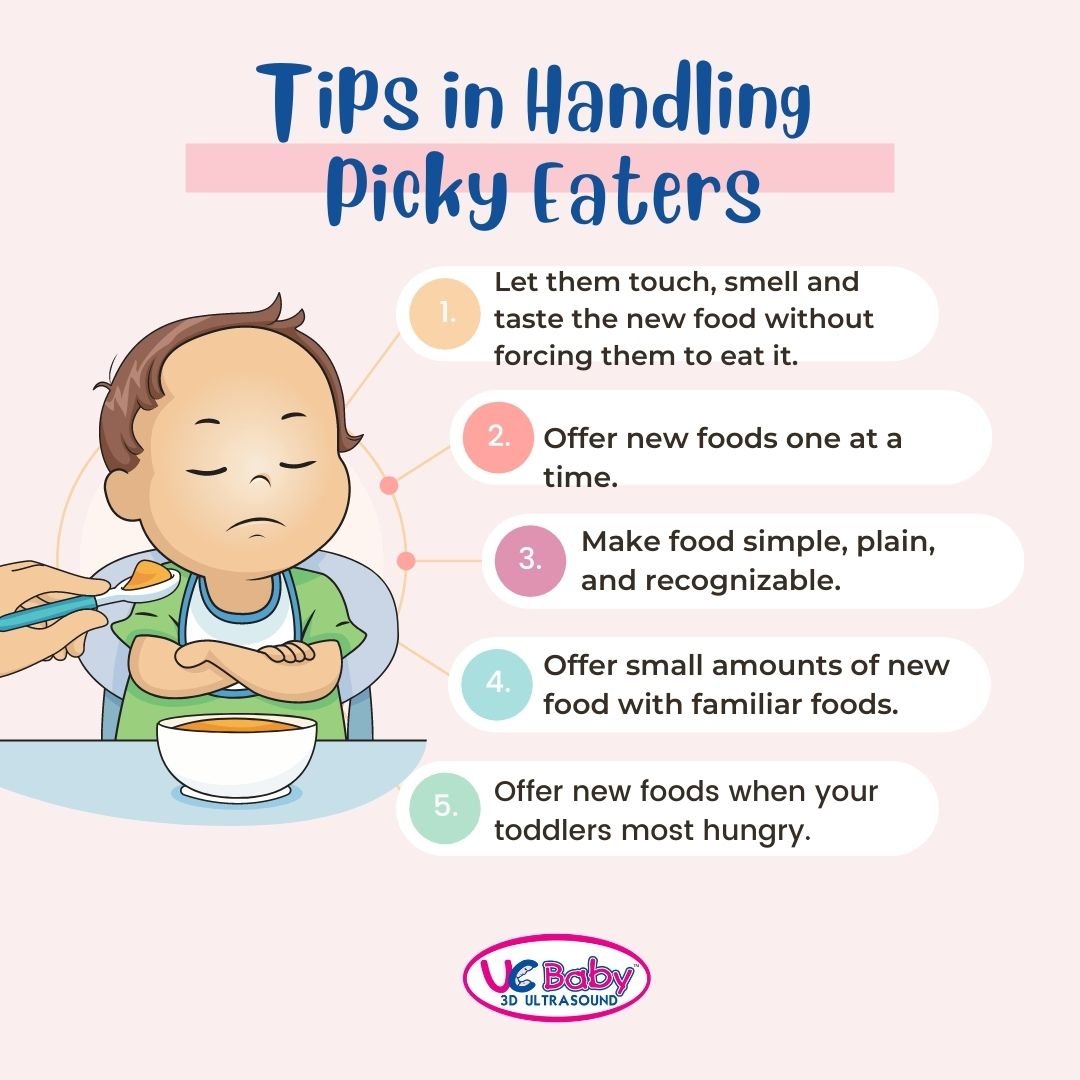The toddler years are full of exploring, discovery and significant milestones. Your toddler is now learning to eat more solid foods and is more active. Feeding toddlers can sometimes be a challenge for some parents. Good nutrition is imperative for growth, health, and energy for learning and playing. This is why it’s important to encourage that development with the right fuel (good kid-friendly foods).
The best thing you can do is offer your toddler a variety of foods from each food group with different tastes, textures and colours. It can be tricky as toddlers are rarely keen on trying new foods.
Establishing healthy eating habits with your toddler and snacking in wholesome foods is important!
Tips in Feeding Toddlers
Make Healthy Meals and Snacks
Since you get to decide what’s on the menu, you should take this prime opportunity to get your baby to like nutritious foods – and limit foods that are high in fat, sugar, cholesterol, and sodium.
Focus on lean beef, poultry, fish, dairy foods, fruits, vegetables, pasta, cereals, and whole-grain bread. As long as your toddlers’ diet is balanced overall, then they’re doing fine.
Eating Behaviours
1. Toddlers like to eat with their hands.
However, they should have the option to learn to use a spoon or a fork. They can usually drink well from a cup, although they may have trouble putting it down without spilling. They’ll get better at these skills with practice.
2. Sometimes your toddler may not want to eat a meal.
They may not be hungry or more interested in something else they’re doing. If your toddler often refuses meals all the time or you’re concerned about their nutrition, talk to your healthcare provider.
3. Don’t worry if your toddler is only eating one thing – for now.
As long as it’s not candy, letting your toddler go on a one-food diet is fine. This is common, usually short-lived, and won’t have a negative effect on his/her health. Continue to present your toddler with various healthy options and remind yourself, this phase will pass.
4. Avoid using food as a reward.
Suppose you get into the habit of offering treats for every accomplishment. In that case, it can lead your toddler to develop an unhealthy relationship with food, which could lead to overeating later on. Give your toddler hugs and kisses when you want to reward your child for a job well done. They’re much more valuable than candy – and healthier.
Monitor Milk Consumption
If you’re breastfeeding your toddler, your breastmilk meets all their dairy needs. There is no need to give any more milk. If you’re not breastfeeding, offer your child 2 cups (500ml) of homogenized whole milk (3.25% milkfat) each day.
Serve milk in an open cup with meals or snacks. If your child is still using a bottle, gradually replace it with a cup. Using a bottle for too long can increase your child’s risk of tooth decay or affect the development of their teeth, jawbones, and mouth muscles.
Homogenized milk has a higher fat content, which is crucial for brain development, and is a good source of energy. Lower-fat milk (2%, 1%, or skim) can be offered to your child once they’re 2 years old.
Careful to not give your child too much milk or they won’t have enough room for other foods they need. Milk lacks a source of iron, so you’ll need to give your toddler a variety of iron-rich foods such as meat.
Feeding Toddlers: Tips for Picky Eaters
- Let them touch, smell and taste the new food without forcing them to eat it
- Offer new foods once at a time, some children may need to try food 10 or more times before they accept it
- Make food simple, plain, and recognizable. Some kids don’t like food that is mixed or different food in the same plate
- Offer small amounts of the new food with familiar foods
- Offer new foods when your toddlers are most hungry (at the start of a meal) or when they’re with other children who like to eat that particular food
Feeding Toddlers: Foods to Avoid
It’s important to avoid foods that may cause choking:
- Slippery foods such as whole grapes, large pieces of meats, hotdogs, candy, and cough drops.
- Small, hard foods such as nuts, seeds, popcorn, chips, pretzels, raw carrots, and raisins.
- Sticky foods such as peanut butter and marshmallows.
Make sure to cut up foods into small pieces and watch your children while they eat.
Also, the most common food allergies are milk, eggs, peanuts and other nuts, soybeans, wheat, fish, and shellfish. If you think your child might have a food allergy, talk to your doctor.
Additional Tips:
- Set a good example of healthy eating for your toddler
- Plan regular meals/snacks and give your toddler enough time to eat
- Plan a quiet time before meals. Children eat better when they are relaxed
- Don’t use food as a reward
- Involve your children in making the food
- Use child-size plates, cups, forks, and spoons
- Introduce new foods as early as possible
- Be a good role model – avoid junky food and your toddler will likely follow your lead
- Have family meals
References:
Feeding Your Toddler – Ages 1 to 3 Years
Toddlers: 1 and 2 year olds: Feeding Your Toddler
Eating and Nutrition: Feeding Your Toddler
Written by: Melissa Ureten
Check out our blog – Tips for Feeding Picky Toddlers






 Invitez familles et amis à assister à cet événement mémorable de votre grossesse. Célébrez avec vos proches où qu’ils soient dans le monde ce moment spécial de lien avec l’enfant.
Invitez familles et amis à assister à cet événement mémorable de votre grossesse. Célébrez avec vos proches où qu’ils soient dans le monde ce moment spécial de lien avec l’enfant. Rien n’est plus beau que les battements de cœur de votre bébé. Enregistrez ce son pour toujours dans un Ourson Coup de cœur de UC Baby®. Il ne s’agit pas simplement d’un beau souvenir, mais aussi d’un moyen efficace qui apaise votre bébé pour l’aider à s’endormir.
Rien n’est plus beau que les battements de cœur de votre bébé. Enregistrez ce son pour toujours dans un Ourson Coup de cœur de UC Baby®. Il ne s’agit pas simplement d’un beau souvenir, mais aussi d’un moyen efficace qui apaise votre bébé pour l’aider à s’endormir.

